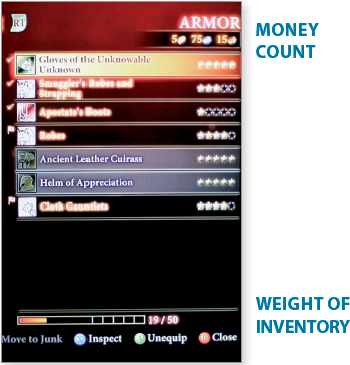MM6-d: Meaning: What effect does the multimodal composition have on the viewer?
Although a composer’s choices about the modes integrated into a multimodal composition are usually deliberate, they don’t necessarily convey the same meaning to all viewers in all contexts. They may not work the way the composer intended, or they may carry additional meanings the composer didn’t anticipate.
In the following excerpt, student writer Marley Cole analyzes item collecting in role-playing video games. Her attention to sound, images, and other features of the games leads her to disagree with one of her sources. In her essay, she includes both text and screen captures from in-game play to support her points.

Gamasutra writer Kris Graft suggests that the desire to collect items in a game world is similar to compulsive hoarding in the real world. The consequences of gathering items may not be as negative for the gamer, but gamers and hoarders, according to Graft, experience similar degrees of emotional investment and gratification when they acquire objects. Graft, however, does not account for the limits placed on acquisition in many game worlds and the penalties incurred when the gamer ignores those limits. Usually, a character cannot carry more than a certain amount. Sometimes that amount increases when the character gets stronger, but there is always a limit. When the character’s pack is full, that character can’t pick up new items (see the image at the right for an in-game inventory example). The character is forced to discard or sell old items to make room for new ones.
In some games, overburdened characters can’t even move until they discard items. Rather than facilitating virtual hoarding, video games actually force gamers to be strategic about what they keep with them. In addition, the experience of parting with items is often positively reinforced. Selling an item can be accompanied by the sound of coins dropping into a pouch or the sight of a money count going up. A character who has lightened his pack might even be able to move faster.
Cole determines meaning by analyzing sounds and images in a multimodal text, a video game. As you develop an interpretation about the meaning of a multimodal piece, be sure to consider genre, features, purpose, and audience. Pulling together your individual impressions of the text’s elements can help you look critically at the text as a whole.